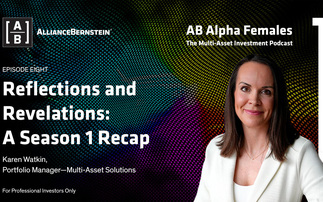Multi-asset managers reveal how they are turning to 'hedge fund-like' liquid alternative strategies in 2016, in a bid to protect portfolios and generate returns across the market cycle. Hardeep Tawakley reports
Higher correlations across traditional asset classes are continuing to drive demand for alternatives among multi-asset managers, particularly in the aftermath of the sell-off seen in global equities earlier this year.
Morningstar research reveals the correlation between sterling corporate bonds and global large-cap equities was in the highest of three quintiles at 0.77 at the end of last year, while none of its asset class categories were negatively correlated.
But while traditionally investors have focused on alternatives like infrastructure, property, commodities and some types of hedge funds, appetite has grown more recently for liquid alternative vehicles.
The latest Investment Association annual survey revealed interest in liquid alternatives had grown by about 40% in 2014/2015. According to Morningstar, there are now 677 liquid alternative investment funds in the mutual fund universe in 15 categories (see chart, below).
Liquid alternative strategies are often skill-based, and you need deep understanding of their return drivers, their timing, and the capabilities of the managers.
Daily liquidity
These strategies allow investors access to alternative assets through a variety of vehicles, and 'importantly provide daily liquidity. This is particularly appealing when markets are volatile and outflows can be significant from certain asset classes.
The vehicles can take on a number of guises and the tools used echo those often found in the hedge fund world - from equity long/short strategies to event-driven and relative value approaches.
James Ind, investment director in the multi-asset group at Baring Asset Management, believes such vehicles are filling an important gap for investors.
"Growth opportunities are no longer the big problem: with gilt yields near their all-time lows, there is little prospect of any real returns after inflation gains. Against this backdrop, investors are showing a growing demand for liquid absolute return strategies."
According to Ind, liquid alternative strategies have several features which make them particularly sought-after.

"When looking at liquid alternatives, investors are careful to distinguish between liquidity at the fund level and liquidity in its underlying assets. The latter is crucial, ensuring the manager will not have problems when markets are stressed or when facing redemptions".
"In addition, with market neutrality strategies, the manager needs to demonstrate a portfolio construction process that is not dependent on any particular market or economic regime, and is stress tested against the severest conditions to show that its diversification will not let you down when you need it most."
Christophe Caspar, chief investment officer, multi-asset solutions, EMEA and Africa at Russell Investments, agrees.
"It is the lower expected returns and higher risks for traditional asset classes that are driving the growing interest in liquid alternatives.
"However, you need really strong manager selection skills to get good results from liquid alternatives. These strategies are often skill-based, and you need deep understanding of their return drivers, their timing, and the capabilities of the managers."
Alternative investments are attractive either because they can help reduce portfolio risk through diversification or because they bring in a new source of generating returns.
Understanding risks
Jonathan Webster-Smith, investment director at Brooks Macdonald, has been allocating to a number of long/short funds since last year.
Although he classifies such funds as carrying a higher level of risk than some traditional alternative assets, these strategies can take advantage of volatile markets while simultaneously making money in flat markets too, which was the case in 2015, he says.
However, some investors have raised concerns over the level of sophistication required on the part of clients to understand these alternative investments, and the potential reputational risk to the industry should they not meet expectations.
Trevor Greetham, head of multi-asset at Royal London Asset Management, is sceptical on the vehicles.
"Alternative investments are attractive either because they can help reduce portfolio risk through diversification or because they bring in a new source of generating returns, through an illiquidity premium in the case of infrastructure or property investments.
"It is not logical to assume you can somehow access the illiquidity premium through liquid instruments.
"Meanwhile, you can mimic the risk characteristics and some of the factor exposures of hedge funds through an optimised mix of stocks, bonds and cash, but the trade-off for gaining liquidity often involves a major or total loss in added value."











